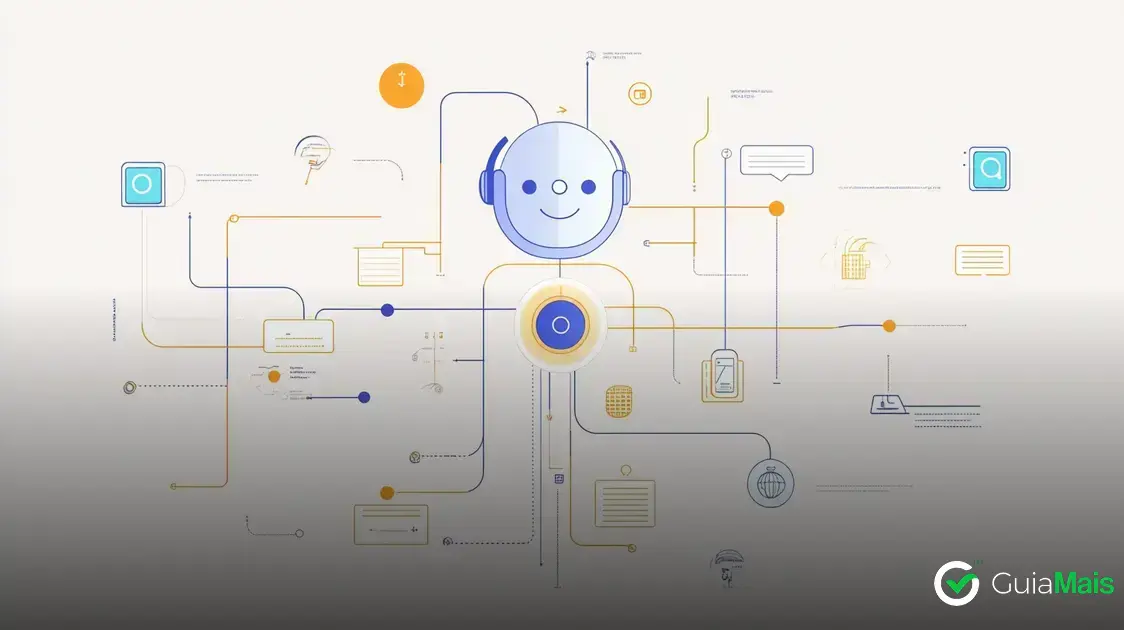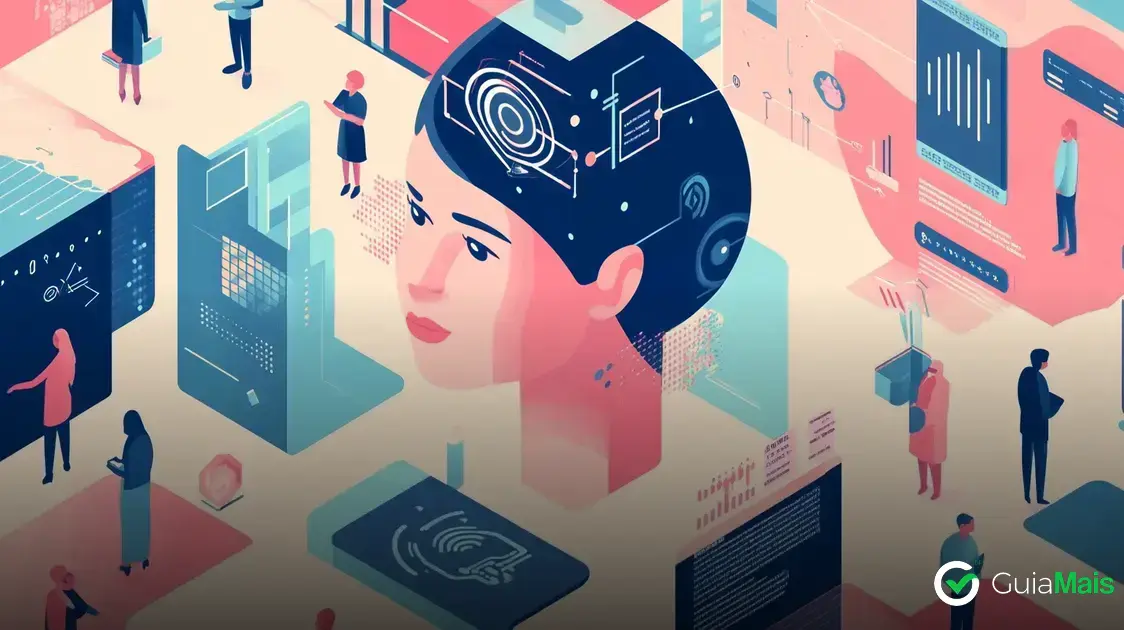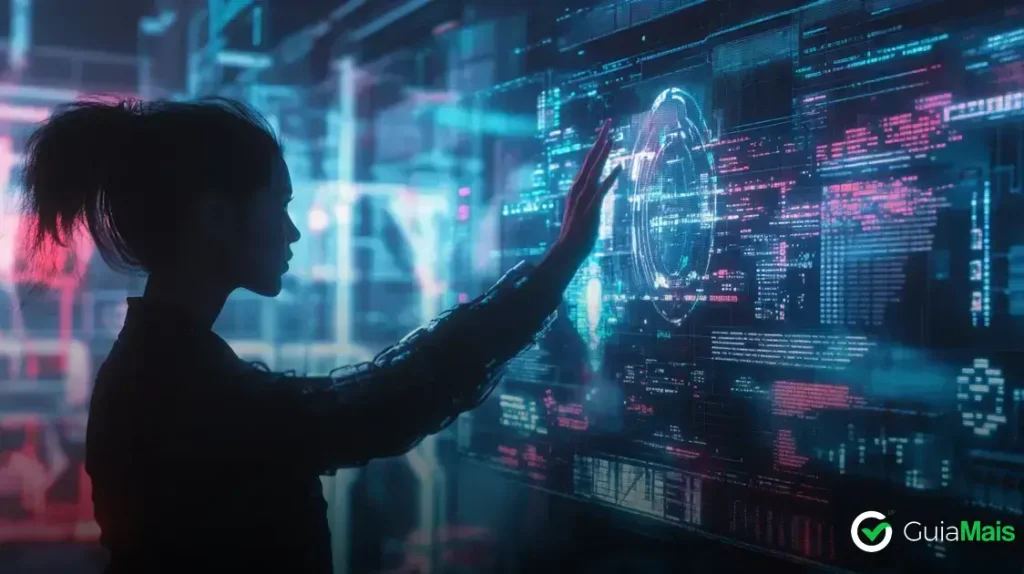AI-powered assistants are intelligent tools that enhance productivity by automating tasks, managing schedules, and improving daily workflows.
They adapt to user preferences over time, offering personalised experiences while integrating seamlessly with various smart devices.
AI-powered assistants are transforming the landscape of technology.
Introducing innovative solutions, they are capable of streamlining our daily tasks and significantly boosting productivity.
Understanding AI-Powered Assistants
AI-powered assistants are computer programs that help people complete tasks more efficiently.
These assistants can understand natural language, which means they can respond to spoken or written commands.
By using advanced algorithms, they can learn and adapt to specific needs over time.
Why Use AI-Powered Assistants?
These tools offer a range of services, such as setting reminders, managing schedules, or answering questions.
They aim to make everyday tasks easier and quicker, allowing users to focus on what matters most.
With AI-powered assistants, you can save time and reduce stress in your daily activities.
How Do They Learn?
AI-powered assistants learn through data. They gather information from your interactions to better understand your preferences and routines.
Over time, they become more effective in providing relevant suggestions and responses. This learning process is called machine learning.
Common Uses
People use AI-powered assistants in various ways. For example, they can be found in smartphones, smart speakers, and even cars.
Common tasks include controlling smart home devices, playing music, or sending messages.
These assistants help users manage their lives with greater convenience.
Adaptability
One of the best features of AI-powered assistants is their adaptability.
They can connect with different applications and devices, integrating into your lifestyle seamlessly.
Whether you need to schedule a meeting or order groceries, these tools can adjust to your changing needs.
Accessibility
AI-powered assistants also promote accessibility.
They can help users with disabilities by providing hands-free options for controlling devices or accessing information.
This technology empowers individuals to perform tasks they might otherwise find challenging.
The Future of AI-Powered Assistants
As technology evolves, AI-powered assistants will become even smarter.
Future developments will likely include better natural language understanding and increased integration with various platforms.
This means they will be able to perform more complex tasks and provide even greater assistance in our daily lives.
Benefits of Using AI-Powered Assistants
Using AI-powered assistants can greatly enhance your productivity and efficiency in daily tasks.
These tools help you manage time better by automating routine activities.
This means you can spend more time on important projects and less time on menial chores.
Time Savings
One of the biggest benefits of AI-powered assistants is their ability to save time.
By automating tasks like scheduling meetings and sending reminders, you can focus on more strategic responsibilities.
This enhances your overall productivity.
Improved Organisation
AI-powered assistants help keep your tasks organised.
With features like to-do lists and calendar management, they ensure you never miss an important deadline again.
This can lead to a smoother workflow and reduce stress.
24/7 Availability
Unlike human assistants, AI-powered assistants are available around the clock.
You can access them anytime to get help with your tasks, no matter where you are.
This flexibility allows for better time management, especially for busy individuals.
Enhanced Accuracy
AI-powered assistants perform tasks with high accuracy. They reduce the risk of errors in scheduling, note-taking, or data management.
This reliability ensures you can trust the information they provide.
Personalization
These assistants learn from your behaviour and preferences. Over time, they can tailor their responses and suggestions based on your needs.
This personalised experience makes them more effective for your unique requirements.
Task Automation
Many repetitive tasks can feel tiresome.
AI-powered assistants automate these mundane processes, freeing up your time for activities that require creativity and deeper thought.
This makes your daily routine more enjoyable.
Cost-Effective Solutions
Using AI-powered assistants can be a cost-effective choice for individuals and businesses.
Their ability to automate tasks can lead to decreased operational costs.
This allows you to allocate resources more efficiently, enhancing your overall growth.
How AI-Powered Assistants Work

Understanding how AI-powered assistants work involves looking at several key concepts.
These assistants rely on advanced technologies like natural language processing, machine learning, and data analysis.
Natural Language Processing (NLP)
NLP is the technology that allows AI-powered assistants to understand human language.
This means they can process and respond to both spoken and written commands effectively.
By breaking down sentences, these tools can identify key words and phrases to understand your requests better.
Machine Learning
Machine learning is a method where AI learns from experience.
The more you interact with an AI-powered assistant, the better it gets at predicting your needs and preferences.
This learning occurs through algorithms that adapt based on your feedback, making the assistant smarter over time.
Data Analysis
Data analysis plays a huge role in how AI-powered assistants provide accurate responses.
These assistants collect and analyse vast amounts of data, drawing upon it to offer relevant information and suggestions.
This helps in personalizing the user experience and enhancing efficiency.
Task Automation
AI-powered assistants can automate many types of tasks.
By recognizing patterns in behaviour, they can carry out repetitive activities like setting reminders or drafting emails without needing much human input.
This not only saves time but increases productivity.
User Interaction
AI assistants interact with users through voice or text.
This interaction can be casual and conversational, allowing users to feel comfortable giving commands.
The more natural the interaction, the easier it becomes for users to engage with these systems.
Integration with Other Apps
AI-powered assistants can integrate with various applications and devices.
This means they can control smart home gadgets, sync with calendars, and access other services.
This seamless integration makes them more functional and versatile, enhancing daily life.
Continuous Improvement
Lastly, AI-powered assistants are continuously improving. Developers regularly update and enhance their functionalities to respond to user needs better.
This ongoing development ensures that users always have access to the latest advancements in AI technology.
Top AI-Powered Assistants Available
There are several AI-powered assistants available today that cater to different needs and preferences.
Here are some of the top options to consider:
1. Google Assistant
Google Assistant is a popular choice that integrates seamlessly with Google services.
It can perform various tasks such as setting reminders, controlling smart devices, and answering questions.
Its natural language processing capabilities make interacting easy and intuitive.
2. Amazon Alexa
Amazon Alexa is well-known for its smart home integration. It can control lighting, play music, and provide news updates.
Alexa is available on various devices, making it a versatile option for users who want a voice-activated assistant in their homes.
3. Apple Siri
Siri is Apple’s AI assistant that offers a range of features for iPhone, iPad, and Mac users.
It helps with tasks like sending messages, making calls, and providing directions.
Siri is known for its user-friendly interface and seamless integration with Apple’s ecosystem.
4. Microsoft Cortana
Cortana is designed to help users manage tasks and find information quickly.
It works well with Microsoft Office products and can assist with scheduling and reminders.
Although primarily used in Windows 10, Cortana also supports other devices.
5. Samsung Bixby
Bixby is Samsung’s AI-powered assistant that provides assistance on Samsung devices.
It can control device settings, manage photos, and even offer real-time translations.
Bixby aims to create a better user experience within the Samsung ecosystem.
6. Hound
Hound is a voice assistant known for its speed and accuracy. It understands complex queries and can perform tasks quickly.
Hound aims to provide precise information, making it suitable for users who need reliable answers.
7. Grammarly Assistant
Grammarly Assistant focuses on writing assistance.
It helps users improve their writing by suggesting corrections, offering style recommendations, and checking for grammar errors.
This tool is especially useful for students and professionals alike.
These AI-powered assistants each have unique features and capabilities.
Assess your needs to find the one that best enhances your daily tasks and overall productivity.
Integrating AI-Powered Assistants in Daily Life
Integrating AI-powered assistants into daily life can enhance productivity and improve how you manage tasks.
Here are some practical ways to incorporate these assistants into your routine:
1. Smart Home Integration
Many AI-powered assistants can control smart home devices. Connect your lights, thermostat, and security cameras to your assistant.
You can then manage these devices using voice commands, making your home more comfortable and secure.
2. Managing Schedules
Use your AI assistant to organise your calendar.
You can schedule appointments, set reminders for important tasks, and receive alerts for upcoming events.
This helps you stay on track and manage your time effectively.
3. Task Automation
AI-powered assistants can automate repetitive tasks. For example, they can send emails, generate reports, or manage to-do lists.
By automating these processes, you free up time to focus on more important activities.
4. Voice Commands for Information
AI-powered assistants provide an easy way to access information.
Use voice commands to ask questions, get the weather forecast, or find recipes while cooking.
This turns your assistant into a helpful resource during your daily activities.
5. Integration with Apps
Many assistants can integrate with applications you already use, such as email and messaging apps.
This allows you to control these apps using voice commands, making communication more efficient and hands-free.
6. Personalised Recommendations
These assistants learn your preferences over time.
AI-powered assistants can suggest activities, entertainment options, or shopping recommendations based on your interests.
This enhances your experience and makes life more convenient by offering personalized recommendations.
7. Maintaining Healthy Routines
AI-powered assistants can help you maintain healthy habits. Set reminders for exercise, track your fitness goals, or even receive nutrition tips.
This way, your assistant becomes a useful partner in promoting your wellbeing.
8. Learning and Development
Utilise AI assistants for learning purposes. They can recommend courses, provide practice quizzes, or help with language learning.
Integrating these tools into your education can make the process more engaging and interactive.
Challenges with AI-Powered Assistants

While AI-powered assistants offer many benefits, there are also challenges that users may face.
Recognising these difficulties can help you better navigate their use.
1. Privacy Concerns
One major challenge with AI assistants is privacy. These assistants often collect and store personal data to provide better services.
This raises concerns about how that data is used and protected, making users cautious about sharing sensitive information.
2. Dependence on Technology
Relying on AI-powered assistants can lead to over-dependence on technology.
Users may become accustomed to having support for every task, which can impact decision-making and problem-solving skills.
3. Misunderstandings and Errors
AI assistants may misunderstand commands or provide inaccurate answers. This can lead to frustration, especially when users expect precise responses.
Continuous improvements are needed in natural language processing to mitigate this issue.
4. Integration Challenges
Integrating AI-powered assistants with other devices and applications can sometimes be difficult.
Compatibility issues may arise, making it harder for users to achieve a seamless experience.
Technical knowledge may be required to ensure proper setup and functionality.
5. Limited Contextual Understanding
Although AI has advanced, it still lacks true contextual understanding.
This means that assistants may struggle with complex requests or follow-up questions, resulting in less helpful interactions for users.
6. Learning Curve
For some individuals, using AI assistants can involve a learning curve.
Not everyone is familiar with voice commands or how to utilise the features effectively.
This can result in underutilisation of the assistant’s capabilities.
7. Security Risks
AI-powered assistants can also pose security risks. If not properly secured, malicious actors may gain access to personal data or control smart devices.
Keeping the assistant updated with the latest security measures is crucial to minimising these risks.
Future Trends in AI-Powered Assistance
The future of AI-powered assistants looks promising with several emerging trends that could transform how we interact with technology.
Here are some key trends to watch:
1. Enhanced Natural Language Understanding
Improvements in natural language understanding will make AI assistants more effective.
They will become better at recognising nuances in speech and context.
This means assistants can carry on more human-like conversations and understand complex requests.
2. Increased Personalisation
Future AI assistants will utilise advanced algorithms to offer more personalised experiences.
By learning from user behaviour, they will tailor responses, suggestions, and services based on individual preferences and habits.
3. Greater Integration with IoT Devices
As the Internet of Things (IoT) expands, AI assistants will seamlessly connect and control a wider range of devices in smart homes and offices.
This enhanced integration will allow users to manage all their devices through a single interface.
4. Multimodal Interaction
Multimodal interaction will become more common, allowing users to communicate with AI assistants through text, voice, gestures, and even visuals.
This flexibility will improve usability and accessibility, making technology more inclusive for all users.
5. Focus on Privacy and Security
With growing concerns over privacy, future AI assistants will implement enhanced security measures.
Developers will focus on protecting user data while still providing excellent service. Transparency in data usage will also become a priority.
6. Contextual Awareness
AI assistants will develop better contextual awareness.
They will understand the environment and situation in which they operate, allowing for more relevant responses.
This contextual information can lead to better decision-making and assistance.
7. Expanded Use Cases
In the future, AI assistants will be used in more sectors beyond homes and offices.
Industries like healthcare, education, and customer service will increasingly adopt AI assistants to enhance efficiency and improve user experiences.
8. Emotional Intelligence
AI assistants may begin to exhibit emotional intelligence, allowing them to respond appropriately to user emotions and sentiments.
This could create more empathetic interactions, making users feel understood and supported.
FAQ – Frequently Asked Questions about AI-Powered Assistants
How can AI-powered assistants improve my daily productivity?
AI-powered assistants can automate routine tasks, manage schedules, and send timely reminders.
This allows you to focus on more important and strategic activities, improving overall productivity.
What are some examples of popular AI-powered assistants?
Popular AI-powered assistants include Google Assistant, Amazon Alexa, Apple Siri, Microsoft Cortana, and Samsung Bixby, each with unique features to help users.
What challenges do users face when using AI-powered assistants?
Users may face challenges such as privacy concerns, misunderstandings, integration issues, and security risks, which need to be addressed for effective usage.
Can AI-powered assistants learn from my preferences?
Yes, AI-powered assistants use machine learning to adapt to your preferences and behaviours, making their responses and suggestions more personalised over time.
How can I integrate AI-powered assistants into my daily life?
You can integrate AI-powered assistants into your life by connecting them to smart home devices and using them for scheduling.
They can also help automate repetitive tasks, optimizing efficiency in your daily routines.
Will AI-powered assistants evolve in the future?
Future trends suggest that AI-powered assistants will become more advanced with enhanced language understanding and better contextual awareness.
This will lead to increased personalization, allowing them to offer more tailored and efficient support.





